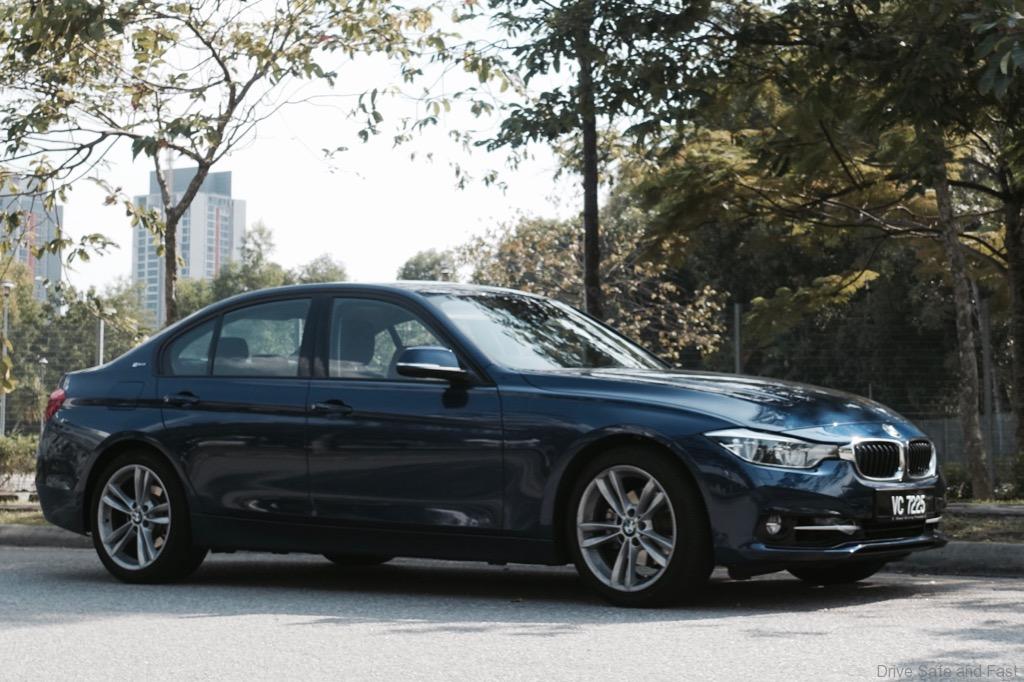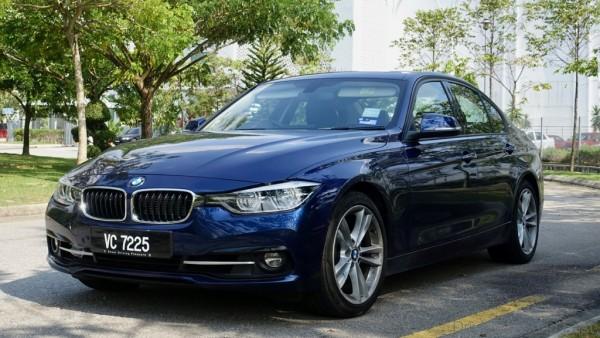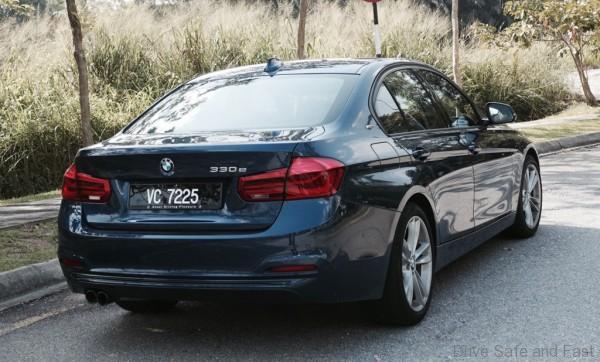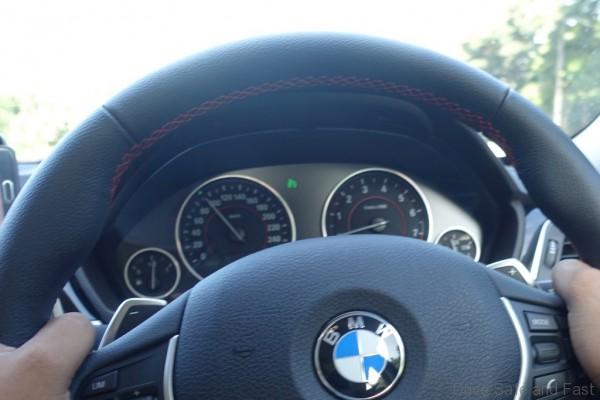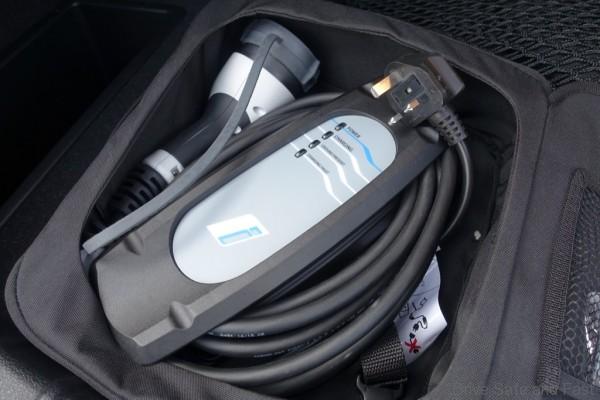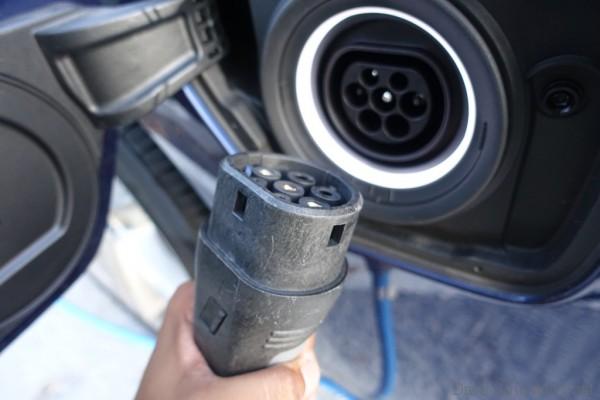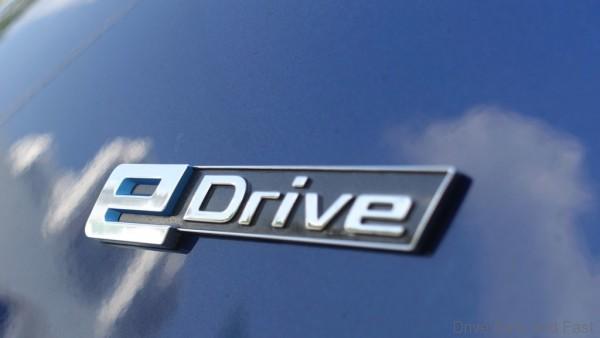The F30 3-Series has been around since 2011, getting a major update last year with the Lifecycle Impulse model bringing in new drivetrain options, a bump in aesthetics and a whole lot more. But perhaps the biggest thing to happen to the 3-Series in Malaysia was the addition of the 330e model.
This new model brings a huge bump in specs and power and yet, thanks to incentives and BMW’s CKD operations, the price isn’t that much higher than the 320i. In fact, for less than RM250,000, you’ll be hard pressed to find a car with more power and technology in Malaysia. Compared to the 320i, the 330e offers Auto Parking with more parking sensors, Navigation, a Heads-up Display, paddle shifters, a large 8.8″ screen with iDrive Touch and a sunroof. That’s quite a bit of kit, and we’re not even scratching the surface of what’s being packaged here.
For that, we have to draw your attention to the 3-Series’ forte – performance. The 330e, being a plug-in hybrid, comes with an electric motor by the transmission. This little fella adds 87hp and 250NM of torque to the petrol engine’s 184hp and 290Nm of torque. The same great engine and gearbox of the 320i make a return. BMW also throw in larger 18″ tyres with Pirelli Cinturato P7 run-flat tyres in place of the Bridgestone Potenza S001 tyres, but this advantage is offset slightly by the weight of the batteries and motor, which add about 200kg to the whole package.
So, how does the 330e compare to the 320i on the road? Well, favourably in some departments, but not quite as good in others. Let’s start with the good.
Fuel Efficiency
There’s no denying just how well executed the hybrid-electric platform is compared to just about anything else on the market. We were able to drive on the highway for close to 10 minutes at 110km/h on battery power ALONE. And when the engine finally kicked in, the transition was so seamless, with hardly any noise or vibration being experienced in the cabin. It felt even better in KL traffic, as we could get through stretches of the federal highway without burning a millilitre of petrol.
Pure Power
The 330e has an immense amount of power. It’s almost as unnatural as the XC90 T8 Twin Engine when it comes to acceleration. When in dynamic mode, there’s just nothing that can stop the 330e. And despite the added weight, it’s still an inherently dynamic package that’ll give you the confidence to drive at your limit.
Charge Anywhere
The 330e can be charged in a number of ways, but it’s great that it includes the standard 3-pin plug. With proper wiring, anyone with landed property can get this working at home.
You can even take advantage of BMW’s partnership with ChargEV to try out one of their quick charging stations. And if you’re only driving a Plug-in Hybrid because it’s an overall better deal, then you can just set the car to ‘SAVE’ mode and it’ll charge the battery as you run on petroleum.
Now, on to the not-so-good.
With a huge battery taking up space in the rear, the boot is 110 litres smaller than it was in the 320i. It’s still serviceable, but that’s a huge hit to take. The fuel tank is also ridiculously small at just 41 litres. If you’re driving it like a typical hybrid, then it’s totally fine. But if you drive it like a 3-Series ought to be driven, you’re going to be visiting the pumps daily. It’s still efficient, but that tank just doesn’t hold enough petrol.
The 8-speed ZF and 2-litre four-pot in the 320i were a match made in heaven. Here was a gearbox that telepathically knew when to shift and an engine that was snappy and willing to jump between revs at a moments notice. Plus, the brakes and weight balance on the 320i were almost perfect (some argue that the 318i’s weight balance is superior). On the 330e, this balance is upset slightly not just by the weight but the added complexity. The regenerative braking system, electric motor and all the components all flow well, but the 320i is a more naturally elegant piece of machinery.
BMW 330e Specifications
Engine: Inline 4 cylinder, twin-scroll turbocharger, electric motor
Capacity: 1998cc, 5700kWh
Gearbox: 8-speed ZF Automatic
Max power: 184bhp @ 5000rpm +87hp
Max torque: 290Nm @ 1350rpm + 250Nm
Top Speed: 225km/h
0-100 km/h: 6.1 secs

